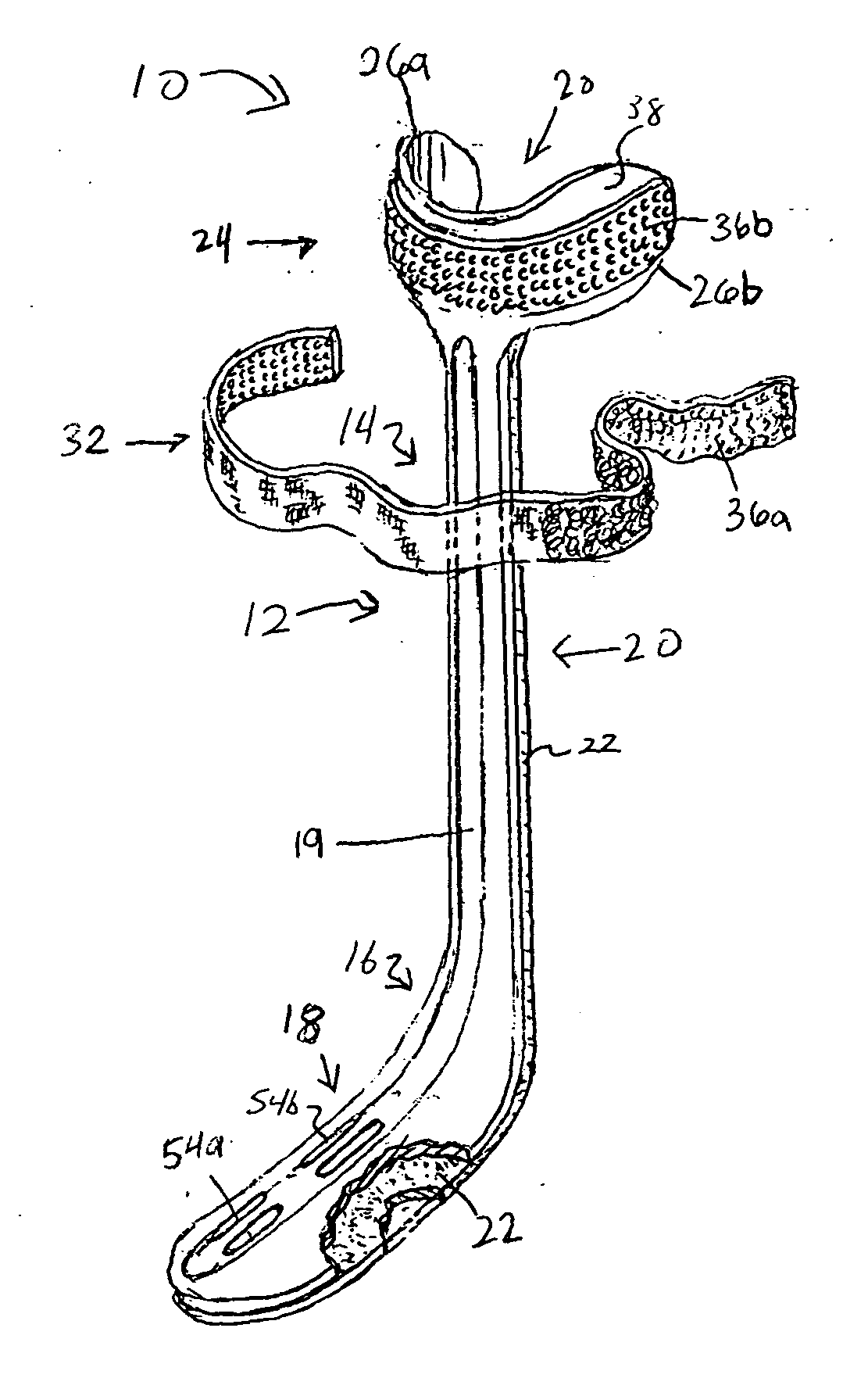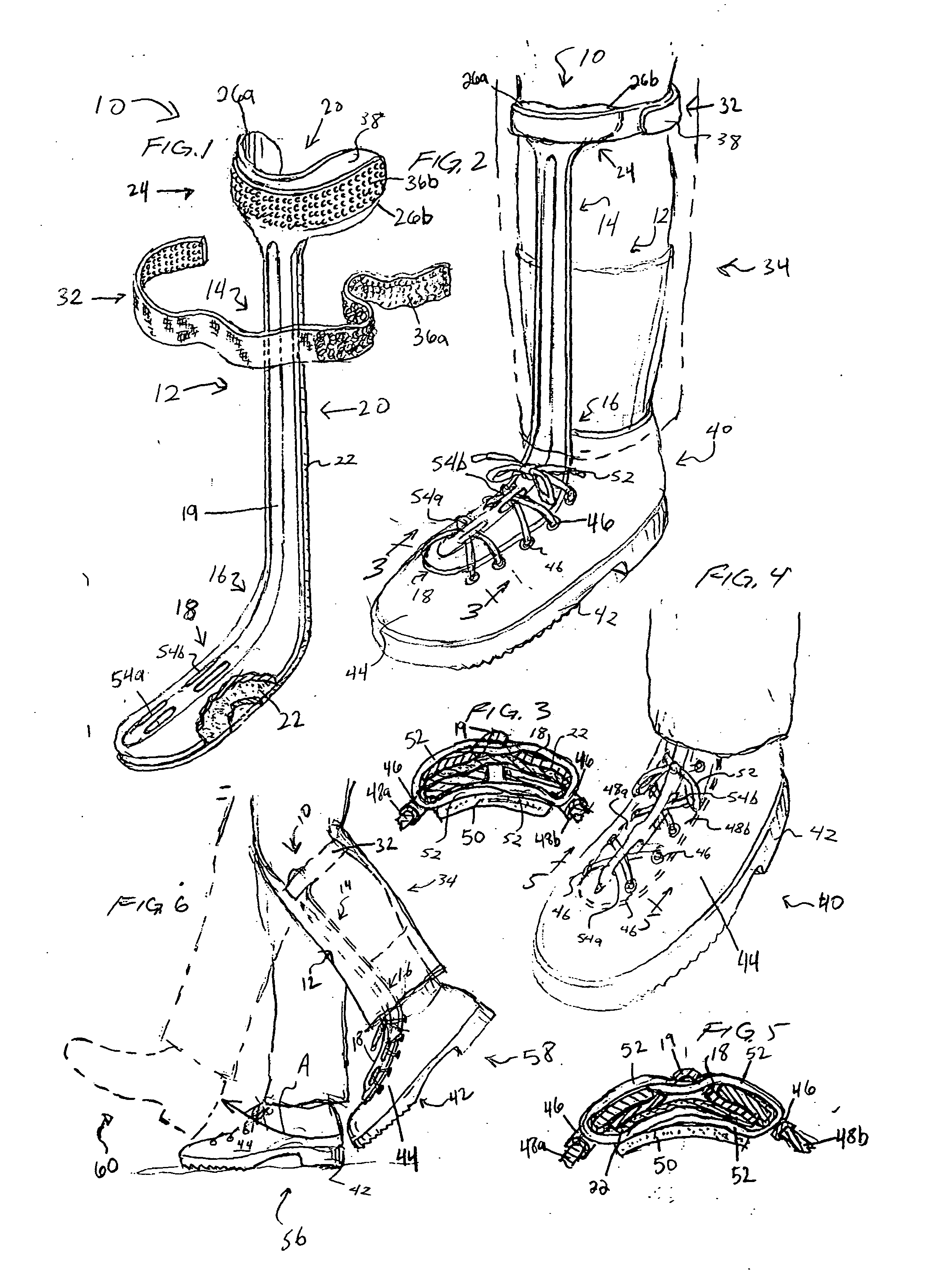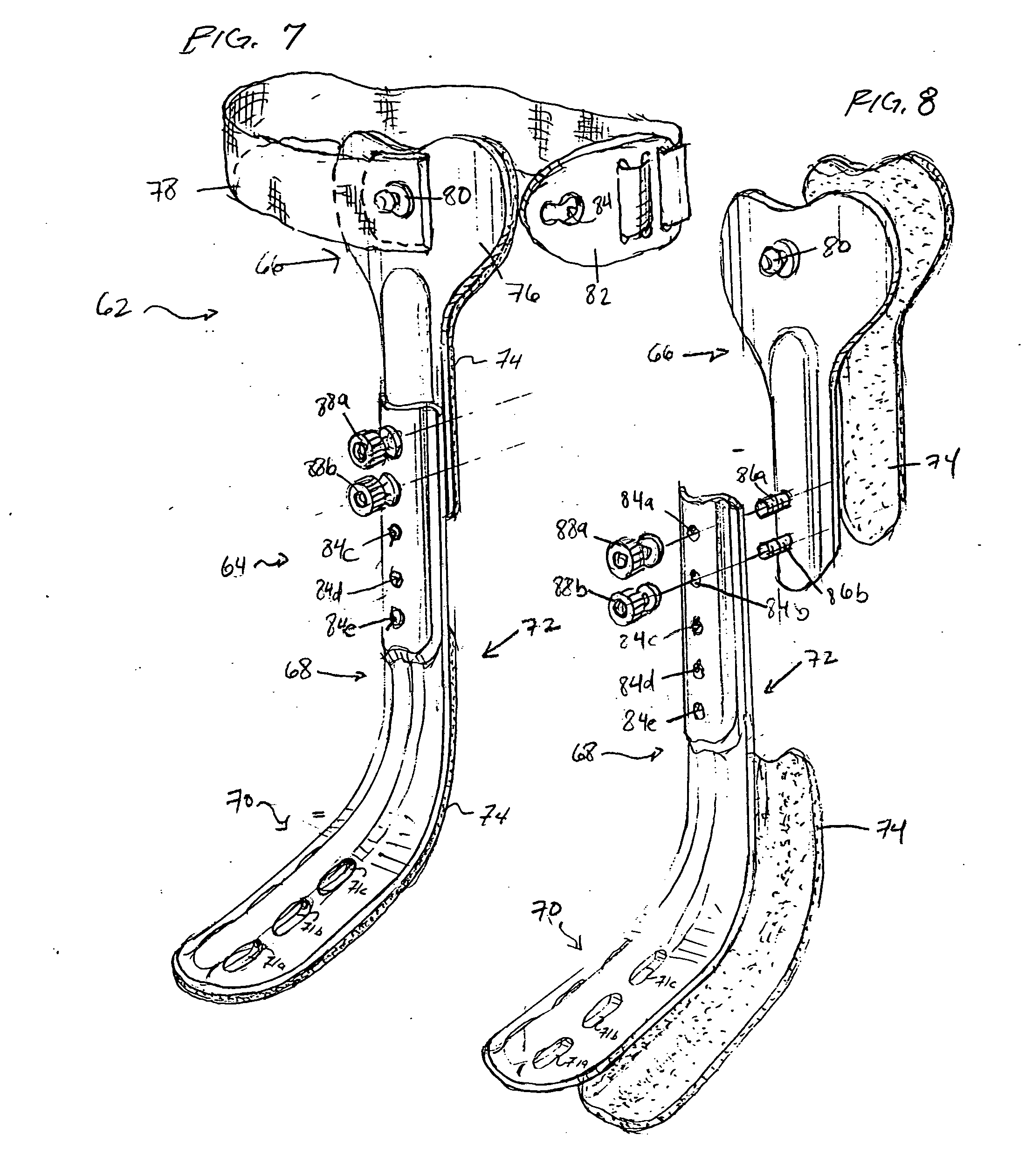Ankle-foot orthotic device and method
a technology for ankles and feet, applied in non-surgical orthopedic devices, restraining devices, medical science, etc., can solve the problems of decreased dorsiflexion control, increased risk of falling or further foot injury, so as to reduce the possibility of skin irritation or tissue damage, prevent foot drop of foot, and increase comfort
- Summary
- Abstract
- Description
- Claims
- Application Information
AI Technical Summary
Benefits of technology
Problems solved by technology
Method used
Image
Examples
Embodiment Construction
[0024] Referring to the FIGURES generally, where like reference numerals denote like structure and elements, and in particular to FIG. 1 which depicts an ankle-foot orthotic device 10 in accordance with the present invention having an elongated member 12 which includes an upper portion 14, an intermediate portion 16 and a lower portion 18. Elongated member 12 is generally L-shaped and adapted to extend along the lower leg and foot of a person with upper portion 14 conforming to an anterior portion of the lower leg, lower portion 18 conforming to a dorsal portion of the foot and intermediate portion 16 extending or bridging between upper portion 14 and lower portion 18. Intermediate portion 16 can be considered as part of upper portion 14 and / or lower portion 18. If desired, extending longitudinally along a generally central region of elongated member 12 a reinforcing rib 19 may be provided which increases the rigidity of elongated member 12. The contour of reinforcing rib 19 further...
PUM
 Login to View More
Login to View More Abstract
Description
Claims
Application Information
 Login to View More
Login to View More - R&D
- Intellectual Property
- Life Sciences
- Materials
- Tech Scout
- Unparalleled Data Quality
- Higher Quality Content
- 60% Fewer Hallucinations
Browse by: Latest US Patents, China's latest patents, Technical Efficacy Thesaurus, Application Domain, Technology Topic, Popular Technical Reports.
© 2025 PatSnap. All rights reserved.Legal|Privacy policy|Modern Slavery Act Transparency Statement|Sitemap|About US| Contact US: help@patsnap.com



